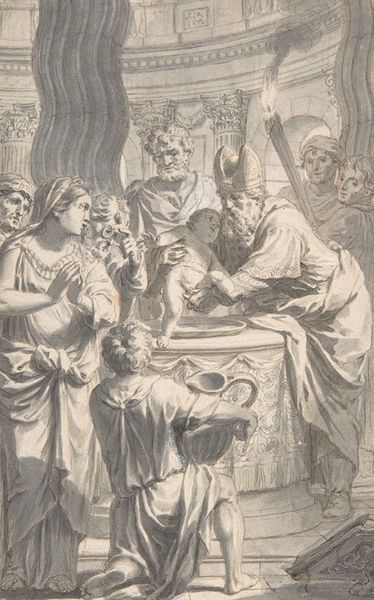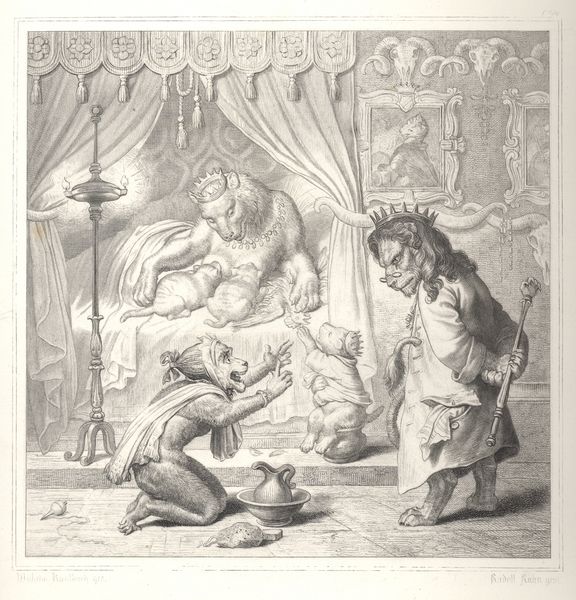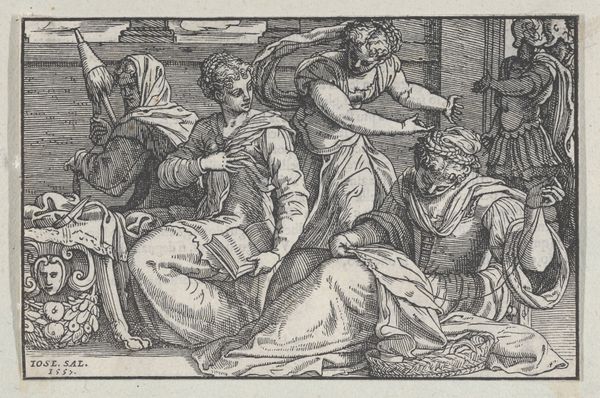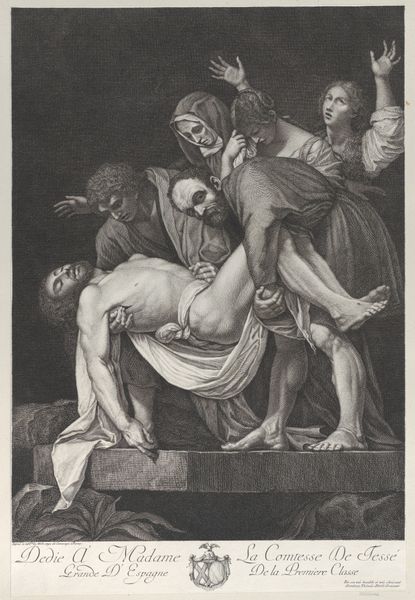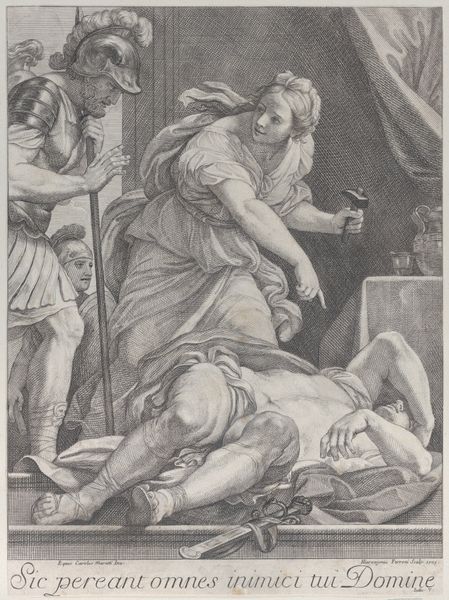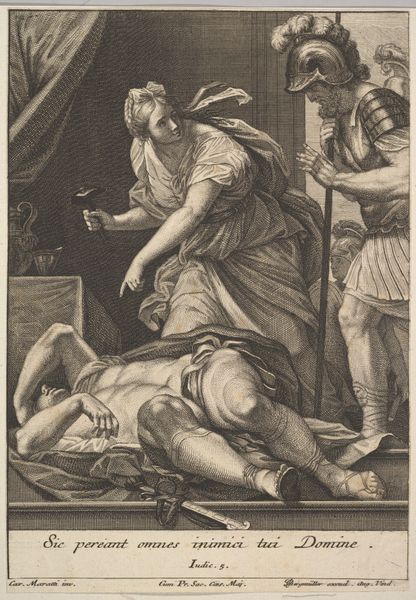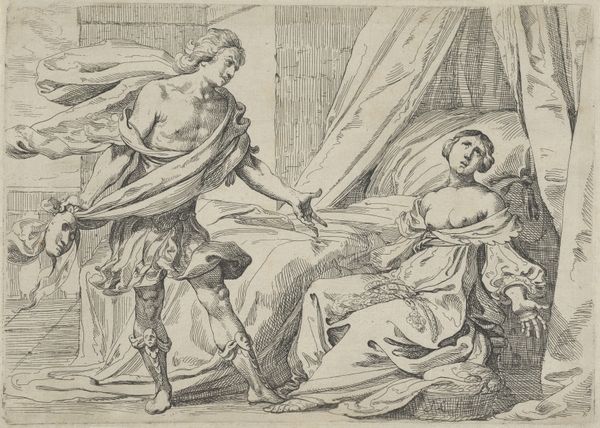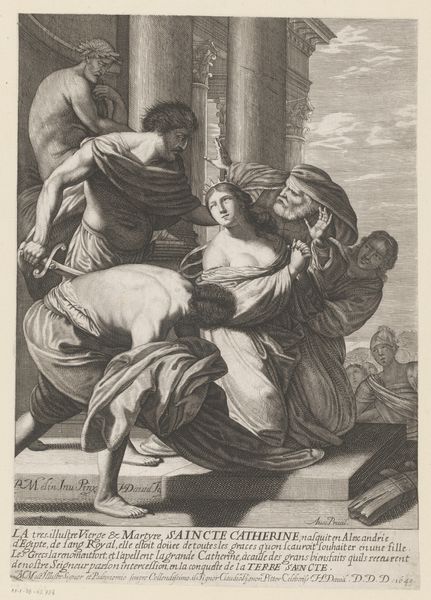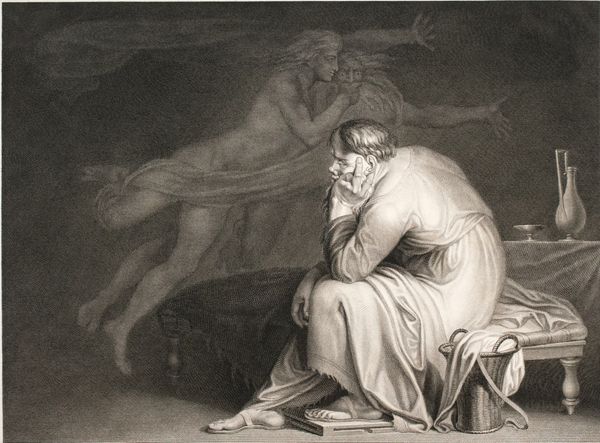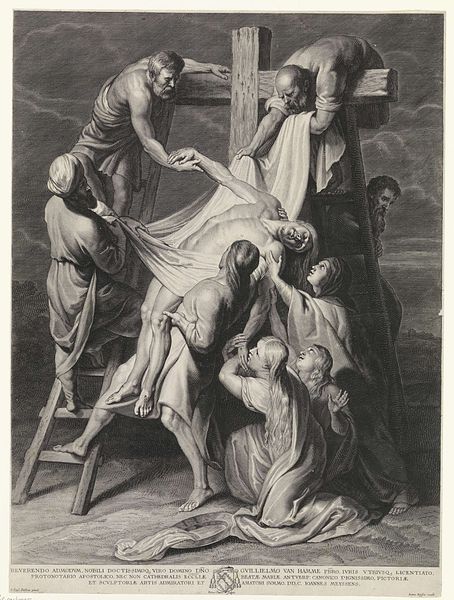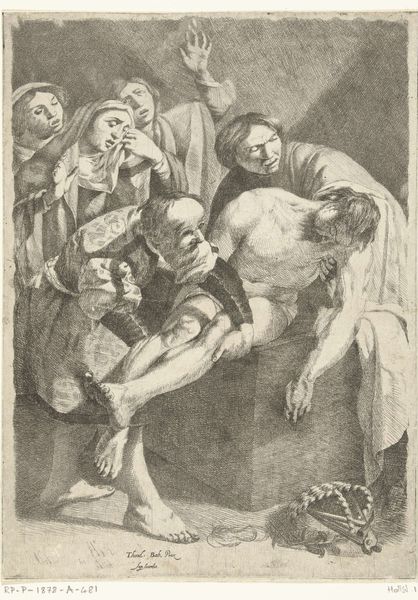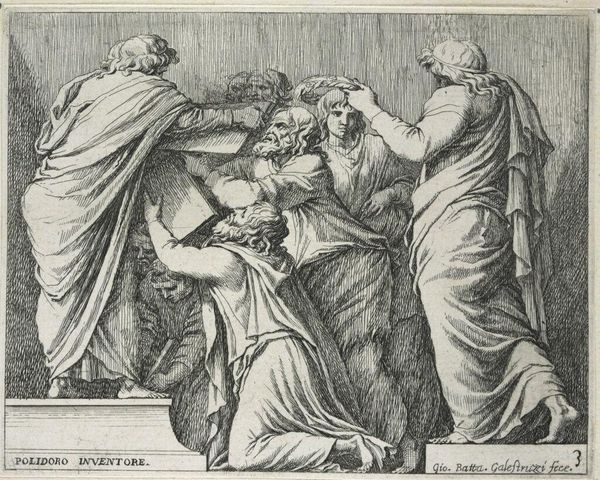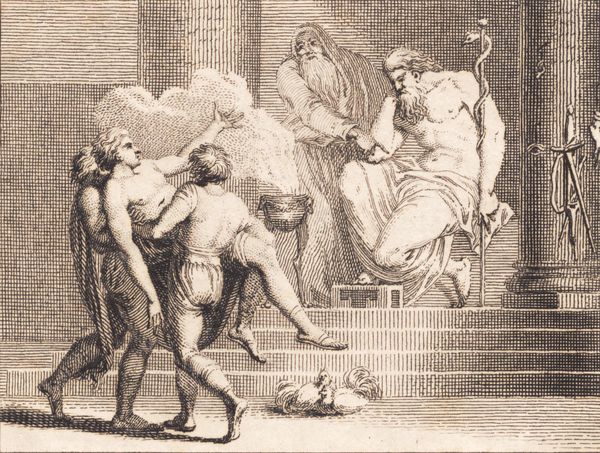
print, engraving
#
narrative-art
#
baroque
# print
#
figuration
#
history-painting
#
engraving
Dimensions: height 342 mm, width 266 mm
Copyright: Rijks Museum: Open Domain
Editor: This engraving, "Judith Beheading Holofernes," created sometime between 1610 and 1614 by Meynert Jelissen, really captures a dramatic moment. The stark contrast and fine lines of the print give it an intensity that's almost unsettling. What do you see in this piece? Curator: The unsettling feeling you describe is quite apt. Look closely at Judith's face—notice how she averts her gaze? Even in victory, there's a sense of discomfort, a psychological weight to her action. Consider, too, the cultural context. Judith, often seen as a symbol of female courage and defiance, resonates deeply. Is she a liberator or something more complicated? Editor: I hadn’t considered the conflict in her expression. I just saw the act itself. So, the symbol of Judith… is it always positive? Curator: Not necessarily. Throughout history, she's been appropriated by various groups. Think about the political implications of a woman violently overthrowing a powerful man. In some eras, it could be seen as a revolutionary act; in others, as a disruption of the natural order. That sword, and the gaze she tries to avoid – what do they recall for us today? Editor: It's interesting how one image can hold so many conflicting interpretations, and how much that shifts over time! Thanks, I'll definitely look at works with new eyes from now on. Curator: Indeed, art serves as a repository of cultural memory. What appears simple on the surface often contains layers of symbolic meaning, reflecting a society's evolving values and anxieties. Thank you.
Comments
No comments
Be the first to comment and join the conversation on the ultimate creative platform.
